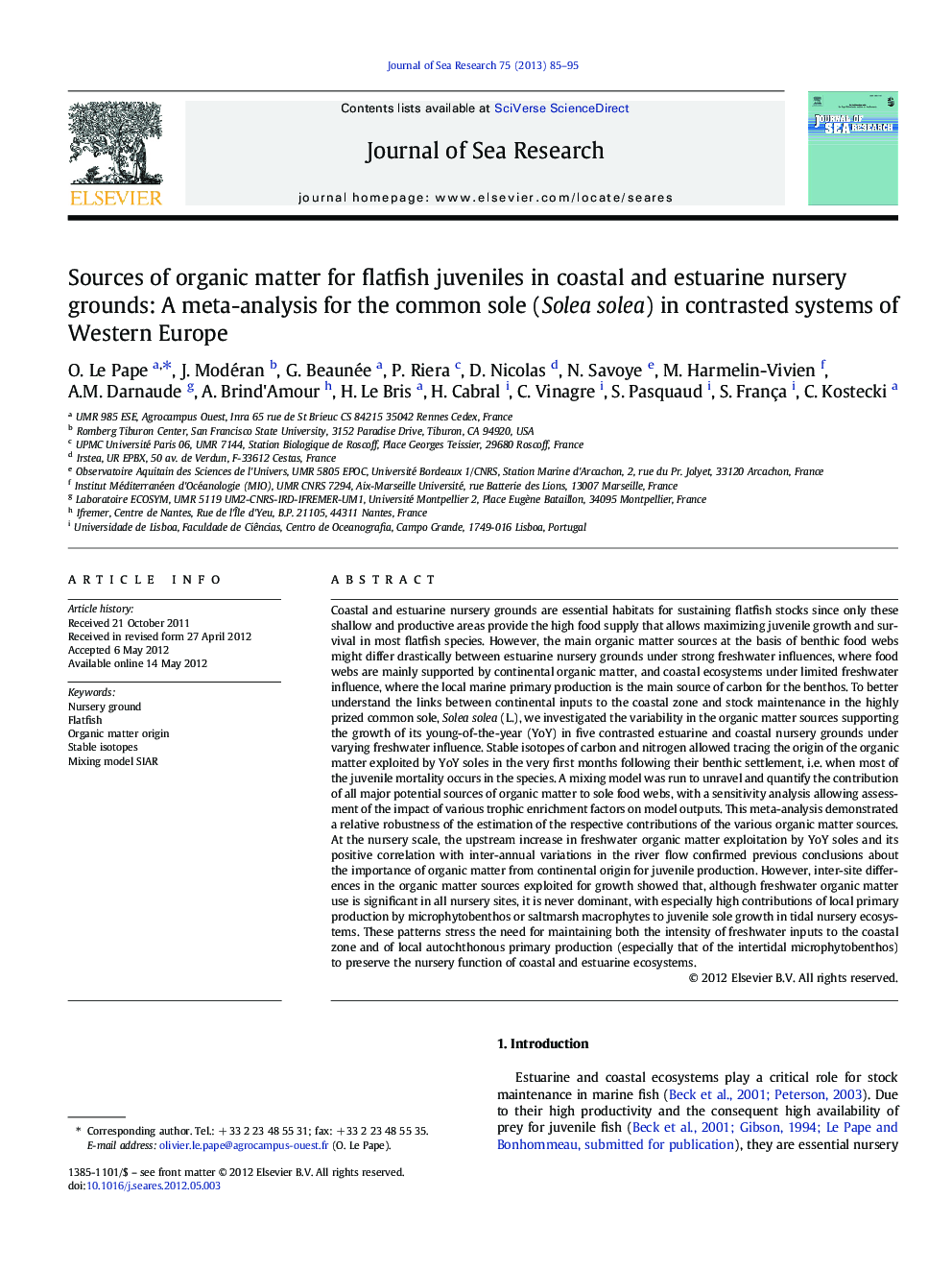| Article ID | Journal | Published Year | Pages | File Type |
|---|---|---|---|---|
| 6387531 | Journal of Sea Research | 2013 | 11 Pages |
Abstract
Coastal and estuarine nursery grounds are essential habitats for sustaining flatfish stocks since only these shallow and productive areas provide the high food supply that allows maximizing juvenile growth and survival in most flatfish species. However, the main organic matter sources at the basis of benthic food webs might differ drastically between estuarine nursery grounds under strong freshwater influences, where food webs are mainly supported by continental organic matter, and coastal ecosystems under limited freshwater influence, where the local marine primary production is the main source of carbon for the benthos. To better understand the links between continental inputs to the coastal zone and stock maintenance in the highly prized common sole, Solea solea (L.), we investigated the variability in the organic matter sources supporting the growth of its young-of-the-year (YoY) in five contrasted estuarine and coastal nursery grounds under varying freshwater influence. Stable isotopes of carbon and nitrogen allowed tracing the origin of the organic matter exploited by YoY soles in the very first months following their benthic settlement, i.e. when most of the juvenile mortality occurs in the species. A mixing model was run to unravel and quantify the contribution of all major potential sources of organic matter to sole food webs, with a sensitivity analysis allowing assessment of the impact of various trophic enrichment factors on model outputs. This meta-analysis demonstrated a relative robustness of the estimation of the respective contributions of the various organic matter sources. At the nursery scale, the upstream increase in freshwater organic matter exploitation by YoY soles and its positive correlation with inter-annual variations in the river flow confirmed previous conclusions about the importance of organic matter from continental origin for juvenile production. However, inter-site differences in the organic matter sources exploited for growth showed that, although freshwater organic matter use is significant in all nursery sites, it is never dominant, with especially high contributions of local primary production by microphytobenthos or saltmarsh macrophytes to juvenile sole growth in tidal nursery ecosystems. These patterns stress the need for maintaining both the intensity of freshwater inputs to the coastal zone and of local autochthonous primary production (especially that of the intertidal microphytobenthos) to preserve the nursery function of coastal and estuarine ecosystems.
Related Topics
Physical Sciences and Engineering
Earth and Planetary Sciences
Oceanography
Authors
O. Le Pape, J. Modéran, G. Beaunée, P. Riera, D. Nicolas, N. Savoye, M. Harmelin-Vivien, A.M. Darnaude, A. Brind'Amour, H. Le Bris, H. Cabral, C. Vinagre, S. Pasquaud, S. França, C. Kostecki,
